| Pompeii: Back from the Dead (2010) |
| www.studenthandouts.com > World History > Ancient Rome > Ancient Rome Books and Films |
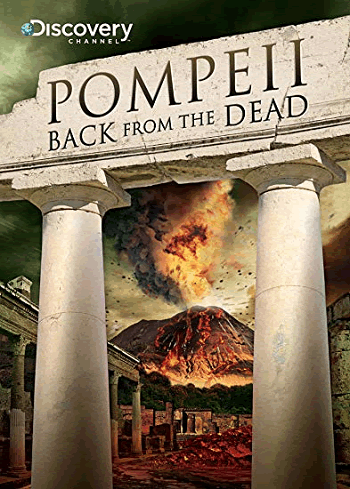 Length: 43 minutes
Length: 43 minutesAge appropriateness: Pompeii: Back from the Dead is officially rated "TV-14" in the United States. This rating is due to the brief yet frank discussions of sexuality in the ancient Roman world. This documentary can be shown in class to high school students, but not to junior high school students. Creators and stars: Amy Kemp, Andrew Wallace-Hadrill, Caterina Turroni, Chris Roots, Chris Vile, Daisy Scalchi, Don Wildman, Fabian Kanz, John Clarke, Mourad Negri, Paul Elston, Richard Bradley, Shahana Meer, Sofiane el Fani, Steffan Boje, Susan Winslow, Tarek Ben Ghziel, Tony Meering Accuracy: Pompeii: Back from the Dead gives an accurate overview of the eruption of Mount Vesuvius in A.D. 79 which resulted in both the destruction and the preservation of the ancient Roman cities of Herculaneum and Pompeii. The archaeological sites are explored with the help of leading researchers. Recent discoveries are discussed. Also included are dramatic reenactments that are quite good for a cable television program. Review: Pompeii: Back from the Dead is an entertaining look at the destruction that was caused by the eruption of Italy's Mount Vesuvius in 79 C.E. It is guaranteed to keep high school students glued to the screen. The main flaws of this documentary film center around its lack of clarity and disregard of historical sources. Watching this program, which jumps between Pompeii, Herculaneum, and the Villa Oplontis, viewers can't be certain which area is being pictured. Additionally, the nature of the eruption, combined with wind currents and the like, led to different ends for Herculaneum and Pompeii, an issue not discussed in the program. Also not discussed, though clearly relied upon, are the historical accounts of Pliny the Younger, whose uncle, Pliny the Elder, died helping people escape from the disaster. The biggest problem that teachers and parents will have with this DVD is the same issue that people have had with the remains of Herculaneum and Pompeii since the sites were first discovered--the sexual imagery that permeated ancient Roman culture. Nude frescoes are found all over the place, and it is hard to discuss the archaeological discoveries in this area without mentioning them (along with the sexual tastes, practices, and proclivities that led to their creation). Up until twenty or thirty years ago (in other words, when I was a high school student) it was hard to find any mention of Pompeiian brothels or sexually-themed frescoes in books or documentaries. But since then, things have changed. Be aware of this if your students are researching Pompeii. Modern videos like Pompeii: Back from the Dead tend to always show the fornication frescoes, and books can be even more graphic. If you are covering Pompeii with high school kids, this shouldn't be an issue. But if you are studying Pompeii as part of a lesson on volcanoes with elementary-age children, be careful to select your materials wisely and screen them thoroughly. The last thing you want is to have to explain to an irate parent why her ten-year-old was subjected to an image of an ancient Roman prostitute in flagrante delicto. Review and discussion questions: (1) Summarize the events that led to the destruction of Pompeii. (2) Why did Crassius Tertius stay behind? (3) Describe slavery in ancient Rome. (4) Compare and contrast Roman and modern toilet habits. (5) What can examinations of human excrement tell us about how and what the residents of Herculaneum ate? (6) List three ways that people died following the eruption of Mount Vesuvius. (7) What caused the deaths of Crassius Tertius and the others who took shelter in his cellar? (8) Locate Mount Vesuvius on a map. (9) What modern coastal city sits near Mount Vesuvius? (10) Imagine that you are caught in a natural disaster like the one at Pompeii. Would you stay or leave? If you leave, what would you carry away with you? Vocabulary terms and names: amphitheater, anthropologist, archaeologist, bathhouse, bones, cellar, coinage, congenital syphilis, Crassius Tertius, deadly, earthquake, eruption, excrement, frescoes, fumes, Herculaneum, infrastructure, Mount Vesuvius, nutrition, plumbing, plume, Pompeii, Poppaea, pumice, pyroclastic flow, Rome, skeletons, slavery, spectators, suffocate, surge, Villa Oplontis, volcano |
 |
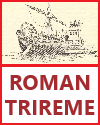 |
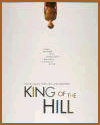 |
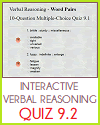 |
 |
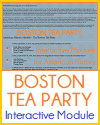 |
|---|
| Ancient Rome Books and Films | Ancient Rome Outlines and PowerPoints |
| Ancient Rome Maps and Pictures | Ancient Rome Study Games |
| Ancient Rome Miscellany | Ancient Rome Worksheets |
| www.studenthandouts.com > World History > Ancient Rome > Ancient Rome Books and Films |






